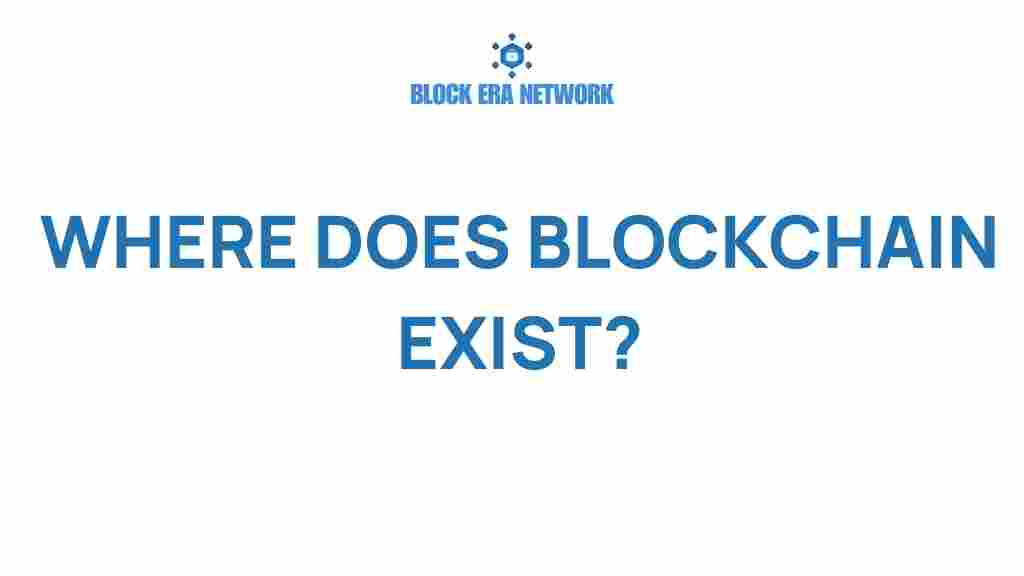Unveiling the Ubiquity of Blockchain: Where Does It Exist?
The rise of blockchain technology has transformed various sectors, ushering in a new era of innovation and transparency. This decentralized technology, often recognized for its role in enabling cryptocurrencies, is proving to be much more than just a digital ledger for financial transactions. In this article, we will explore the ubiquity of blockchain, its applications across diverse industries, and its potential to enhance data security while reshaping the future of technology.
Understanding Blockchain Technology
At its core, blockchain is a distributed database or digital ledger that records transactions across many computers in such a way that the registered transactions cannot be altered retroactively. This ensures the integrity and security of data without the need for a trusted third party. Here are some fundamental characteristics of blockchain:
- Decentralization: Unlike traditional databases, blockchains are decentralized, meaning they are not controlled by a single entity.
- Transparency: All transactions are visible to participants, ensuring accountability.
- Security: Data is encrypted and linked across blocks, making it resistant to fraud.
- Immutability: Once information is recorded, it cannot be modified or deleted without consensus from the network.
Where Does Blockchain Exist?
Blockchain technology is not confined to cryptocurrencies alone. Its applications are widespread, affecting various sectors. Here’s a closer look at where blockchain exists:
1. Finance and Banking
The financial sector was one of the first to embrace blockchain technology. Institutions are now using it for:
- Cross-border payments: Reducing transaction times from days to seconds.
- Smart contracts: Automating agreements without intermediaries.
- Fraud prevention: Enhancing security and transparency in transactions.
2. Supply Chain Management
In supply chains, blockchain provides end-to-end visibility. Companies utilize it to:
- Track products: From origin to destination, ensuring authenticity.
- Improve accountability: By recording every transaction in the supply chain.
- Enhance efficiency: Streamlining operations through automation.
3. Healthcare
In healthcare, blockchain can help manage patient records securely. Applications include:
- Patient data management: Securely storing and sharing health records.
- Drug traceability: Ensuring the authenticity of pharmaceuticals.
- Research collaboration: Enabling secure data sharing among researchers.
4. Real Estate
The real estate industry is exploring blockchain for:
- Property transactions: Reducing fraud and speeding up processes.
- Smart contracts: Automating lease agreements and property transfers.
- Title management: Providing a secure and transparent title registry.
5. Voting Systems
Blockchain can enhance the integrity of voting systems by:
- Ensuring transparency: Making votes publicly verifiable.
- Reducing tampering: Protecting against fraud and manipulation.
- Increasing accessibility: Allowing remote voting while maintaining security.
The Future of Blockchain Technology
The future of blockchain is promising, with ongoing innovations poised to revolutionize various sectors. Here are some anticipated trends:
- Interoperability: Future blockchains will be able to communicate with one another, enhancing functionality.
- Decentralized finance (DeFi): Expanding the use of blockchain in financial services without central authorities.
- Regulatory frameworks: Governments are beginning to establish regulations to ensure security and compliance.
- Integration with IoT: Enhancing data security and transparency in the Internet of Things.
Step-by-Step Process of Implementing Blockchain
Organizations looking to adopt blockchain technology can follow a structured approach:
- Identify Use Case: Determine how blockchain can solve existing problems or improve processes.
- Choose a Platform: Select a suitable blockchain platform (e.g., Ethereum, Hyperledger, etc.) based on your needs.
- Develop the Application: Design and develop the blockchain application tailored to your use case.
- Test the Solution: Rigorously test the application to ensure functionality and security.
- Deploy and Monitor: Launch the application and continuously monitor its performance and security.
Troubleshooting Tips for Blockchain Implementation
While implementing blockchain, organizations may face challenges. Here are some troubleshooting tips:
- Data Integrity Issues: Ensure all nodes in the network have the same data to maintain consensus.
- Scalability Concerns: Choose a blockchain that can handle the expected transaction volume.
- Regulatory Compliance: Stay updated on regulations that may affect blockchain use in your industry.
- Security Vulnerabilities: Regularly audit your blockchain solution for potential security risks.
Conclusion
In conclusion, the ubiquity of blockchain technology is transforming industries and fostering a new wave of innovation and transparency. From finance and supply chain to healthcare and real estate, its applications are extensive and growing. As organizations continue to explore the potential of this decentralized technology, the future holds immense possibilities for enhancing data security and operational efficiency.
For more information on blockchain applications and industry insights, visit blockchain.com and stay informed about the latest developments in this revolutionary technology.
Ready to dive deeper into blockchain? Check out our comprehensive guide on how to implement blockchain technology in your business.
This article is in the category Blockchain Basics and created by Block Era Network Team

1 thought on “Unveiling the Ubiquity of Blockchain: Where Does It Exist?”